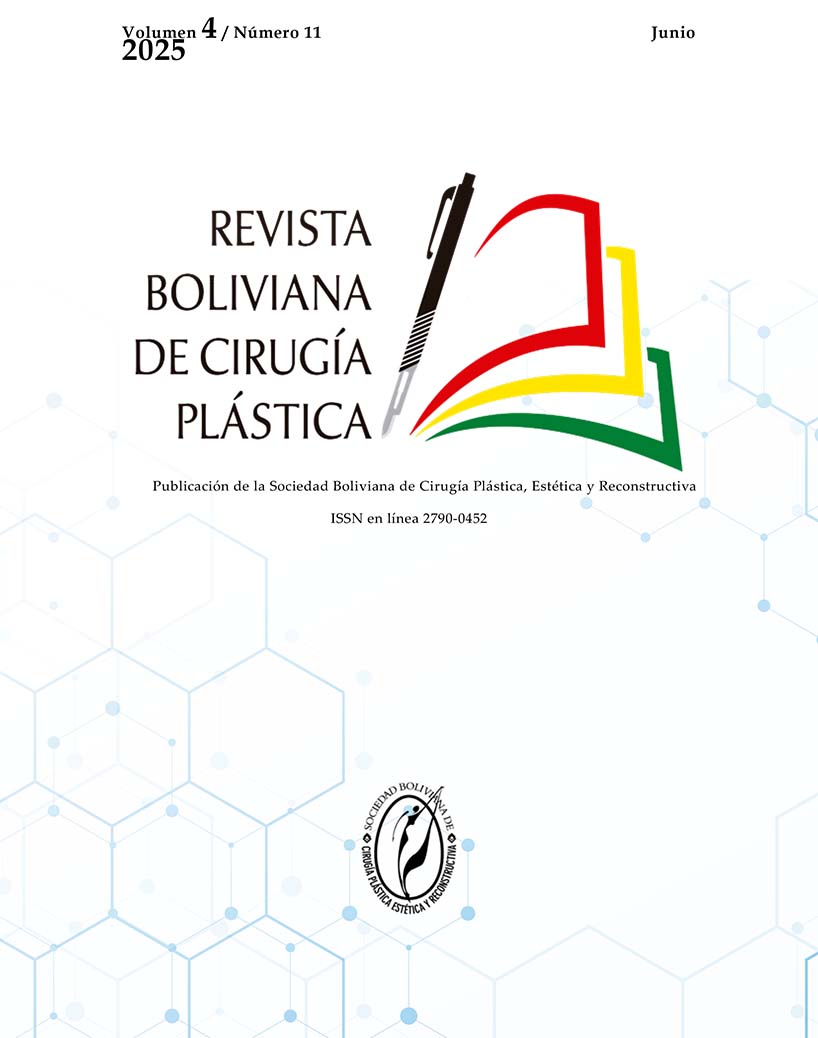Abstract
Introduction and Objective: Coverage of hand defects requires careful evaluation of both the skin lesion itself; due to the specific characteristics it presents, such as the possible associated lesions of the vasculo-nervous, bone or tendon structures of the area. The bilobed flap, double transposition, versatile and random pedicle. It allows the distribution of tension forces in several directions with maintenance of structural symmetry and transfer of skin of similar color and textures (1). Described by Esser in 1918, using a rotational arc of 180 degrees, based on two lobes of the same size and the same shape (2,3,5). Modified by ZIMANY, which showed that the first and second lobe could be smaller than the primary defect. ZITELLI, in 1989, modified the procedure by limiting the total rotational arc to an angle between 90 and 110 degrees. Being particularly useful in the reconstruction of defects of the distal third of the nose and different facial areas, however; Its applicability and usefulness in other anatomical locations has been demonstrated. THE OBJECTIVE of the presentation of this case is to demonstrate the Applicability of the Bilobulated Flap in Injuries of the Back of the Hand.
Material and methods: Bibliographic review on the surgical options for the repair of this defect, finding only ONE (01) case report using the Bilobed Flap for coverage of the Back of Hand. (Tavares Ermelindo - 11) He was chosen to use the Bilobulated Flap on an outpatient basis, under Local Anesthesia with Sedation.
Results: It was possible to perform the total coverage of the defect on an outpatient basis, obtaining a satisfactory functional and aesthetic result.
Conclusions: It is essential to provide coverage according to the anatomical structure and the functional needs of the region to be reconstructed. This fact is very significant in dorsal hand injuries, since the extensor apparatus is usually involved. Local flaps, both axial and random flow, provide stable coverage and are the best choice when there is exposure of important structures, although they are limited to minor and medium defects. In this case, the Bilobed Flap, generally used for defects of the dorsum and nasal tip; should be considered as a therapeutic option for injuries of the back of the hand.

This work is licensed under a Creative Commons Attribution-NonCommercial-NoDerivatives 4.0 International License.

